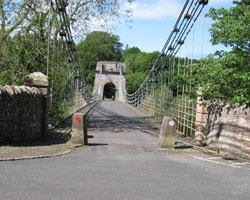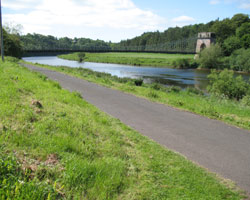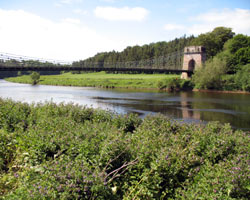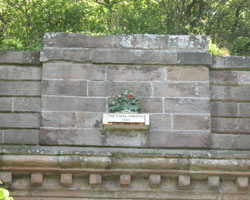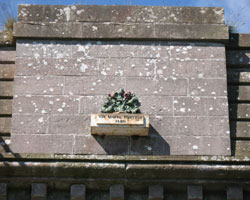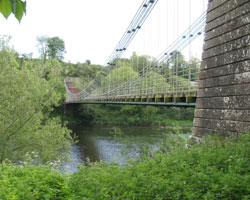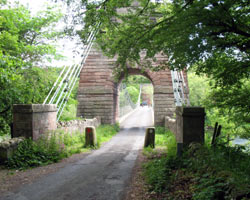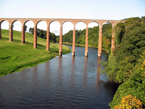
UNION BRIDGE, HORNCLIFFE
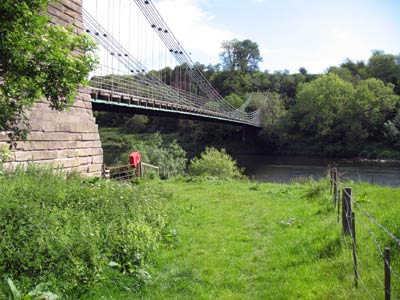
"The Tweed is a beautiful river throughout its length and the scene at Union Bridge is nothing less than idyllic, with the prospect of the wooded grounds of Paxton Hall rising on their bluff beyond the stream."
The Compnaion Guide to Northumbria. Edward Grierson. 1976.
This is supposedly the oldest suspension bridge in the world still in use by road traffic and at the time of its building was the longest suspension bridge in the world and the first to carry road traffic. It is actually situated at Loan End about a mile north east of Horncliffe in Northumberland, England and is on a minor road leading to the B6461 in Scotland. It was built by Captain Samuel Brown of the Royal Navy who also designed other bridges. John Rennie gave advice on the stone abutments and tower design and the cost was £6449 (or £7700 according to Pevsner and £5000 according to a quote from Local Records of Northumberland in Bob's Bridges book). Wire rope cables were added in 1902 and various other alterations and renewals have been made since. The toll house was demolished in 1952 and the following year winds caused severe damage, necessitating repairs.It is Grade 1 listed.
The stone tower at the Scottish end is used to anchor the cables but on the English side they are embedded into the rock on the cliff face through a masonry facade matching the Scottish tower. The tower carries the Scottish thistle emblem and the English anchorage has the rose. The bridge deck is 120 metres long ; total span 137 metres. It is single lane and only one vehicle at a time is allowed to cross. A ford existed here before the bridge, which is attractively located amidst the wooded banks of the Tweed.
- Constructed - 1819-20
- Type - suspension, wrought iron chains, timber deck.
- Position: 1M north east of Horncliffe, Northumberland.
- Grid Ref: NT 933 510
